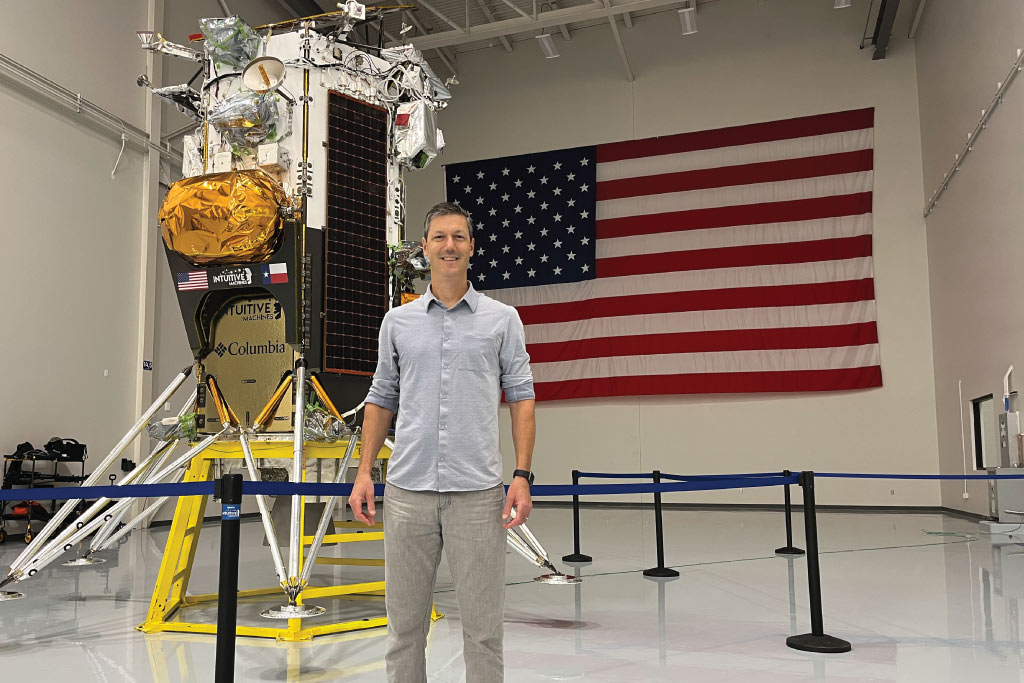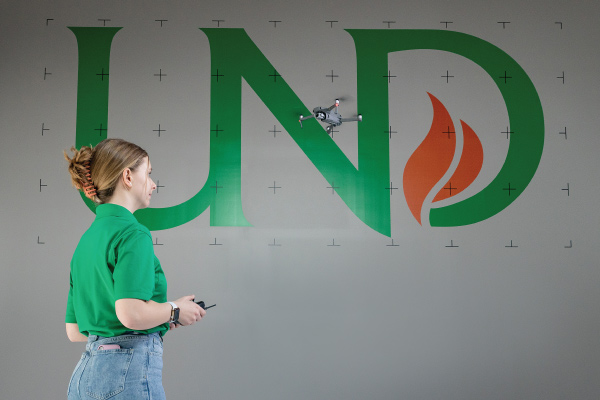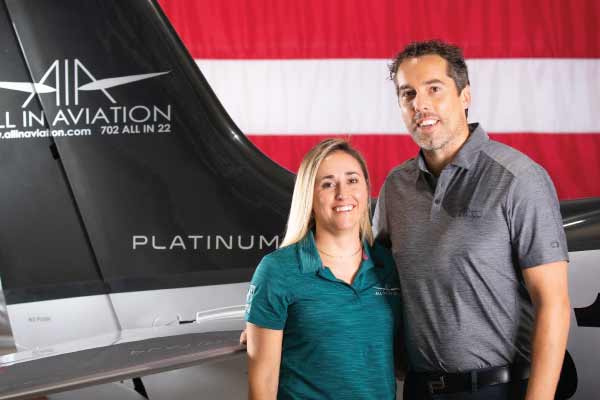Lunar Lessons
Jay Barton, ’05, and his team are helping map exploration of the Moon.
Jay Barton has big plans for the Moon. His company, Iron Ring Technologies, helped develop the IM-2 Athena lunar lander, which in March 2025 made the southernmost landing on the Moon to date.
The mission, part of NASA’s Commercial Lunar Payload Services program, marked a major step in exploring the Moon’s South Pole and supported the broader Artemis program — NASA’s effort to return humans to the lunar surface.
Jay and his team at Iron Ring worked with Intuitive Machines, NASA, and other partners to deliver important technology to the Moon. Their mission captured incredibly sharp images of the lunar South Pole — about 100 times clearer than anything previously available.
“Better image quality is always good. The more you know about your destination, the better your chances of success,” Jay said. “We now know where the rubble paths are, where safer landing zones might be.”

Jay Barton is Chief Engineer - Mechanical Systems at Iron Ring Technologies, the company he co-founded in 2016.
Rough Landing, Lessons Learned
The mission didn’t go entirely as planned. A faulty altimeter — a device that measures altitude – prevented the lander from properly executing the final landing maneuver, which resulted in the lander tipping over. The team quickly responded and was able to operate several key experiments and download 500 MB of images and engineer data.
“It’s not the orientation or exact spot we wanted, but many good things came out of it,” Jay said.
The mission’s debrief — or “hot wash,” as engineers call it — wrapped up in early April. Stakeholders, including NASA, identified 80 areas for improvement for the next mission, IM-3. Better laser altimeters and approach systems topped the list.
“We can’t change the entire structure, but we can change a lot,” Jay said of IM-3, which launches next year. “Every mission is different. It’s always a learning process.”
Small Company, Big Plans
Iron Ring Technologies has just 10 employees. “We don’t focus on just one subject area—we focus on our expertise,” Jay said.
That expertise spans lunar landers, rovers, astronaut tools, EVA (extravehicular activity) systems, and more.
Jay credits UND’s Space Studies program with helping him tackle complex challenges. “I’ve always liked underdog endeavors,” he said. “And space is the ultimate one.”
Data from Athena is already shaping the next steps in lunar exploration — and Jay’s team is hard at work building what’s next.


